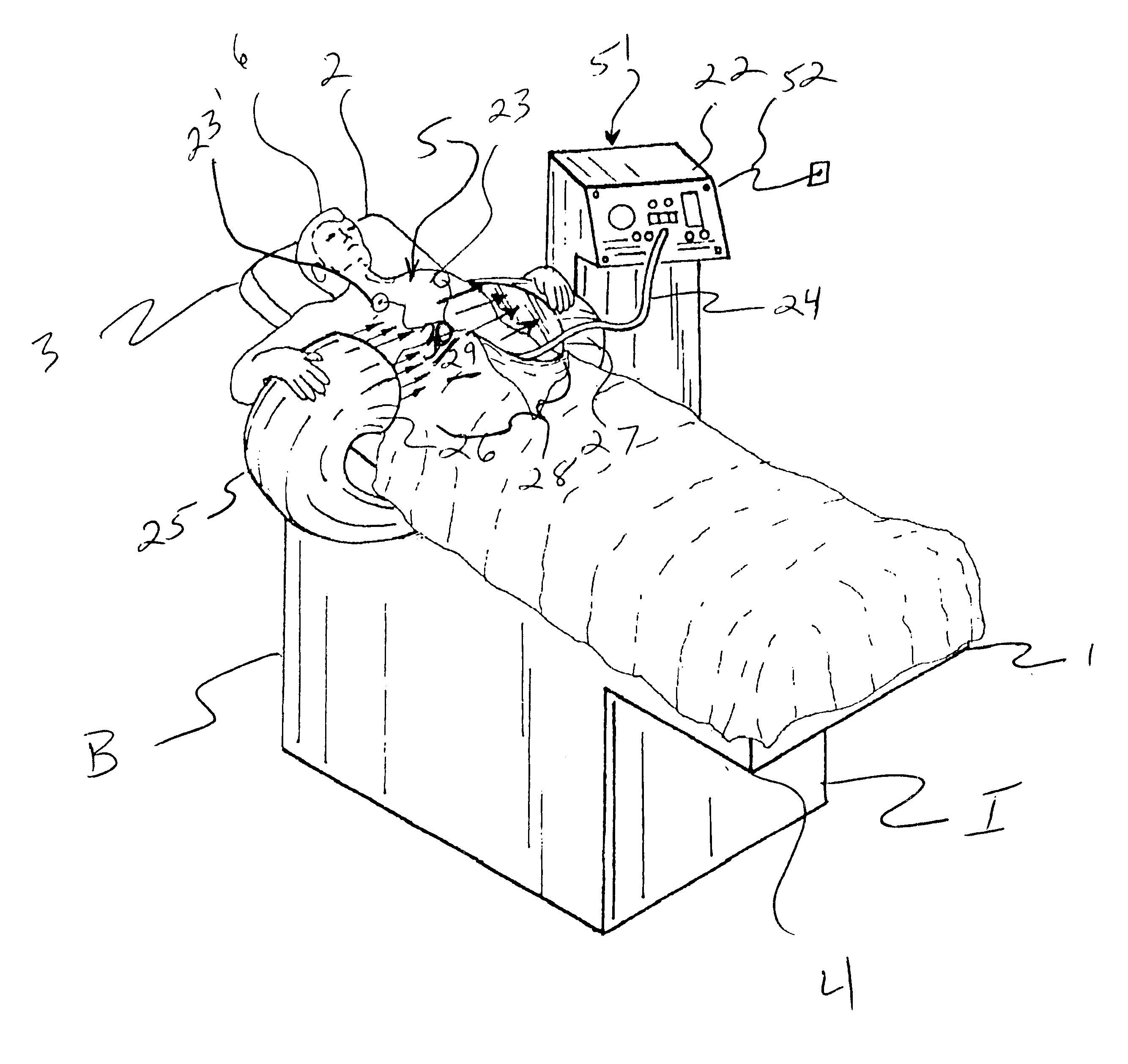Magnetohydrodynamic cardiac assist device
- Summary
- Abstract
- Description
- Claims
- Application Information
AI Technical Summary
Benefits of technology
Problems solved by technology
Method used
Image
Examples
first embodiment
Continuing with FIGS. 1, 2, and 3A, 4A-4C, the present invention comprises an MHD LVAD (left ventricular assist device) configured to provide assistance to the heart 5 of the patient 6 via assist of the left ventricle 8, wherein an aortic electrode assembly 31 is placed into the abdominal aorta 7 of the patient via the femoral artery 9, the placement in similar fashion to the technique employed in facilitating a balloon angioplasty, as will be more fully explained infra.
The aortic electrode assembly 31 comprises a first 13, anterior electrode and a second 14, posterior electrode, the first 13 and second 14 electrodes configured to engage the inner diameter anterior and posterior, or upper and inner walls 7' of the blood vessel in which they are placed, in this case, the aorta 7 (with the patient laying on their back in a generally horizontal position). In the exemplary aortic electrode assembly 31, the first and second electrodes are held in parallel, spaced 33 relationship at oppos...
second embodiment
Continuing with FIGS. 3B, 8, 8A, 8B, and 8C, the invention is configured to provide a minimally invasive by-pass pump for coronary artery by-pass surgery. With the aortic electrode assembly 31 in the abdominal aorta, as discussed supra, providing a magnetohydrodynamic motive force (blood flow) away from the heart, a venal electrode assembly 31' having similar elements and design configuration, and placed in the inferior vena cava 7' of the abdomen, but with the posterior electrode 14' having positive polarity D.C. current, and the anterior electrode 13' being negative, (i.e., the electrodes polarity is opposite those of the aortic electrode assembly 31, which anterior 13 electrode was positive and posterior electrode 14 was negative, with current 36 going from top to bottom) thereby hydrodynamically directing the blood flow 10' toward the heart. With the aortic electrode assembly 31 in the Aorta 7, and the venal electrode assembly in the Vena Cava 7' both electrodes energized and in...
PUM
 Login to View More
Login to View More Abstract
Description
Claims
Application Information
 Login to View More
Login to View More - R&D
- Intellectual Property
- Life Sciences
- Materials
- Tech Scout
- Unparalleled Data Quality
- Higher Quality Content
- 60% Fewer Hallucinations
Browse by: Latest US Patents, China's latest patents, Technical Efficacy Thesaurus, Application Domain, Technology Topic, Popular Technical Reports.
© 2025 PatSnap. All rights reserved.Legal|Privacy policy|Modern Slavery Act Transparency Statement|Sitemap|About US| Contact US: help@patsnap.com



